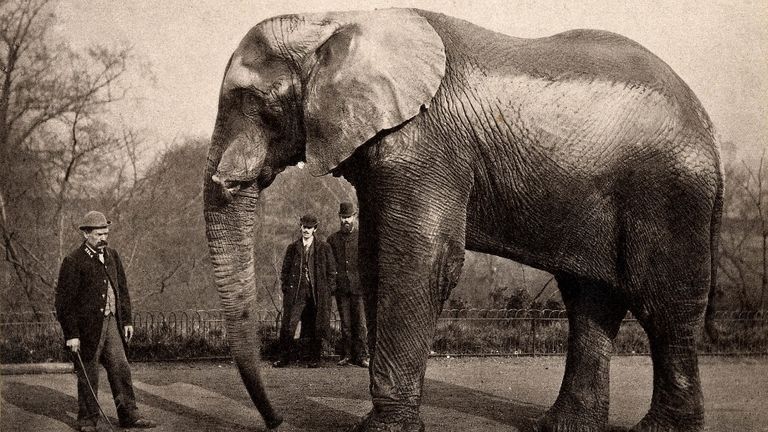Jumbo The Elephant: The Rise And Tragic Fall Of The 'Largest Animal On Earth'
Come one, come all! Step right up! Back in the 19th century, the circus was the hottest ticket in town when it came to entertainment. Bustling crowds would pile in under Big Tops, ready to be amazed by all manner of marvels and wonders. But one star above all others stole the show: Jumbo the Elephant. This was a period, remember, when most people had never seen an elephant before, so you can imagine how shocking it was for audiences to be confronted by this gargantuan creature for the first time. Jumbo was a star in the truest sense, but beyond the dazzle of the circus ring his tale is, sadly, riddled with tragedy.
Heartbreaking from the beginning
In truth, Jumbo’s life was heartbreaking from the very beginning. He was born in Sudan in 1860 and within the first couple of years of his life he was already being exposed to terrible trauma. As a calf he watched his mother’s slaughter at the hands of poachers, before being placed into captivity himself.
This poor baby animal had a strange life ahead. He would never be free, and he would soon be forced to travel the world for the amusement of another species entirely. The pachyderm was fated to become one of the most famous animals of all time.
A most bizarre odyssey
The young elephant was taken to Kassala, a city in Sudan, where, along with a bunch of other captured wild animals, he was sold to an Italian man named Lorenzo Casanova. Casanova was plotting a bizarre and difficult journey: he planned to take his strange ensemble of creatures on a 300-mile odyssey across the desert towards a port on the Red Sea.
Casanova’s group included camels, monkeys, cheetahs, birds, jackals, porcupines, and, of course, the baby elephant, among many others. Some were in cages, while others walked; it doubtless made for a most bizarre sight.
Animals on tour
Casanova’s motley crew traveled during the night, so as to avoid the intense heat of the day. As you might imagine, progress was extremely slow and it took them about six weeks to reach their destination. But for the imprisoned animals, there would be no respite. Once they finally reached the port, they were then forced to endure an 800-mile journey by boat to Suez in Egypt, followed by a train to Alexandria, another boat to Trieste in Italy, and finally another train to the German city of Dresden, where Casanova was based.
After that grueling journey, the animals were then forced to travel around Germany as part of a touring menagerie. But it was the elephant who started to attract the attention of other animal-exhibiting businesses. Before long, a Paris-based institution had purchased the young creature.
Making a deal
This transaction, which saw the French institution acquire the elephant, caught the attention of Abraham Bartlett, who was the head of London Zoo. He’d wanted to get his hands on an African elephant for a long time — none had ever been brought to Europe before — so he was left extremely annoyed that his French rivals had beaten him to the punch. He was determined to bring the creature to his zoo.
Bartlett entered negotiations with the French institution, and a deal was eventually struck. It cost Bartlett quite a lot: he had to hand over a kangaroo, a rhino, a possum, a jackal, two dingoes, and two eagles in order to get this one elephant.

